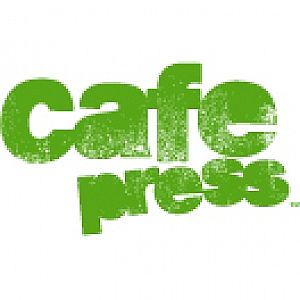 There are a number of sites on the internet that offer print-on-demand production of merchandise: shirts, mugs, iphone cases, refrigerator magnets, widgets, what-have-you. You upload your designs to their specifications, and when a customer orders, the object is manufactured and shipped to them. You pay no inventory cost, no warehousing, and earn a percentage of the sale. Of all of the sites offering similar services, I have the greatest amount of experience with CafePress.
There are a number of sites on the internet that offer print-on-demand production of merchandise: shirts, mugs, iphone cases, refrigerator magnets, widgets, what-have-you. You upload your designs to their specifications, and when a customer orders, the object is manufactured and shipped to them. You pay no inventory cost, no warehousing, and earn a percentage of the sale. Of all of the sites offering similar services, I have the greatest amount of experience with CafePress.
Cafepress was founded in 1999, and currently has more than 13 million users. The site produces over 250 different types of products, ranging from poster prints and banners, to drinkware, to all manner of clothing. The process is simple — you create your storefront (which can be customized to match your website), upload your custom graphics (following the free downloadable product templates), set your price (Cafepress will tell you the cost of production, and you set your mark-up above that price — which is the amount that you earn per sale), and activate the product for sale. Cafepress handles the sale, the production, and the shipping, and pays you your monthly commission within 45 days of the month in which it accrued.
 If you wish to run sales entirely through your own website, Cafepress also allows you to buy your own merchandise at cost, with price breaks for bulk ordering — so you can order inventory if you prefer to handle all aspects of the transaction yourself. Given the ability to customize a Cafepress shop to match your own, and embed it using simple HTML (iframe, for example), though, there’s not many drawbacks to simply letting Cafepress handle most of the back-end. If you follow the templates provided, I’ve found that the quality of Cafepress’ production is excellent. The poster that we did for THRILLING TALES, featuring the artwork originally used for the classic Justice, Inc. cover, turned out so well that I had a copy framed at a local art store and it now hangs in my living room.
If you wish to run sales entirely through your own website, Cafepress also allows you to buy your own merchandise at cost, with price breaks for bulk ordering — so you can order inventory if you prefer to handle all aspects of the transaction yourself. Given the ability to customize a Cafepress shop to match your own, and embed it using simple HTML (iframe, for example), though, there’s not many drawbacks to simply letting Cafepress handle most of the back-end. If you follow the templates provided, I’ve found that the quality of Cafepress’ production is excellent. The poster that we did for THRILLING TALES, featuring the artwork originally used for the classic Justice, Inc. cover, turned out so well that I had a copy framed at a local art store and it now hangs in my living room.
The creation and sale of merchandise isn’t likely to be your primary focus as an Insurgent Creative — I suspect there are few of us who say “I want to design and sell original T-Shirts, gifts, stationery and more” (and those of us that do want to will probably figure out some way to traditionally produce inventory, as it brings the costs down significantly). However, for writers, artists, musicians, game designers, etc., the ability to have merchandise available that is branded for your property serves not only as a nice way to market your main property, but also acts as a good source of additional income. Whether you’re looking to have merchandise available online, or you’re interested in having some stock produced for sale at conventions or other events, Cafepress is a good option with minimal headaches.





